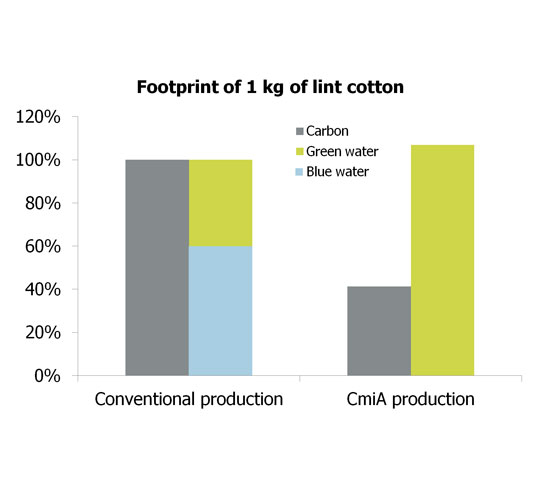Metrics
The term “lower impact cotton” refers to a range of options, including those from the Better Cotton Initiative and Cotton made in Africa (CmiA). There is currently no publically available, peer-reviewed data that compares all the options alongside the various sources of conventional cotton.
A public life cycle assessment of CmiA cotton found that its production has a 59% lower carbon footprint than global average conventional cotton [1]. The total water footprint of CmiA cotton was found to be 8% higher, but this is 99% rain-fed or “green” water [1,2]. CmiA production uses no “blue“ water resource – surface or ground water – because it does not rely on irrigation. In contrast, 60% of the water footprint of average conventional cotton is “blue” water.
1. Systain Consulting, Nill, M. and Wick, K., 2012, The Carbon and Water Footprint of Cotton made in Africa
2. Hoekstra AY et al, 2011, The Water Footprint Assessment Manual
